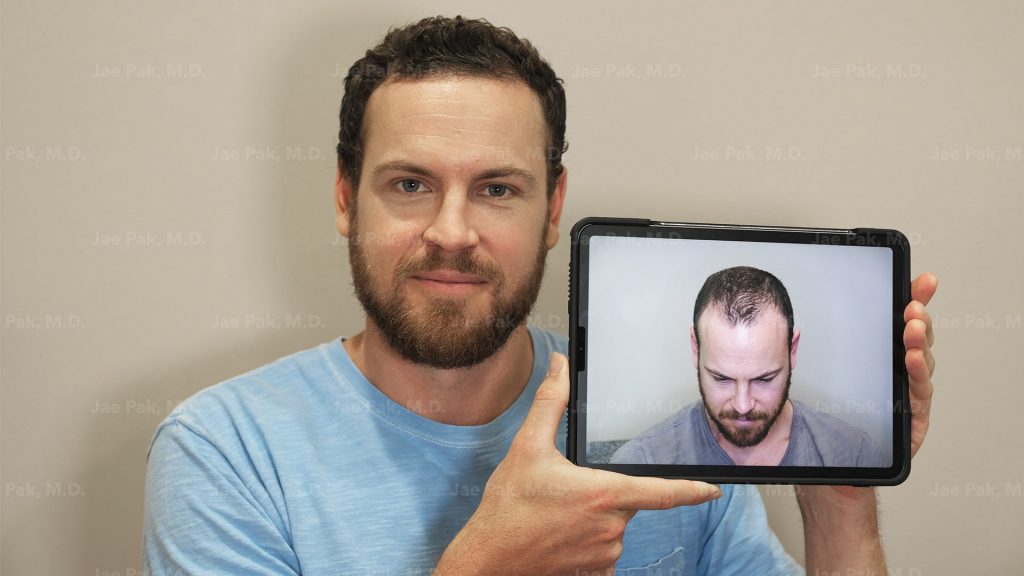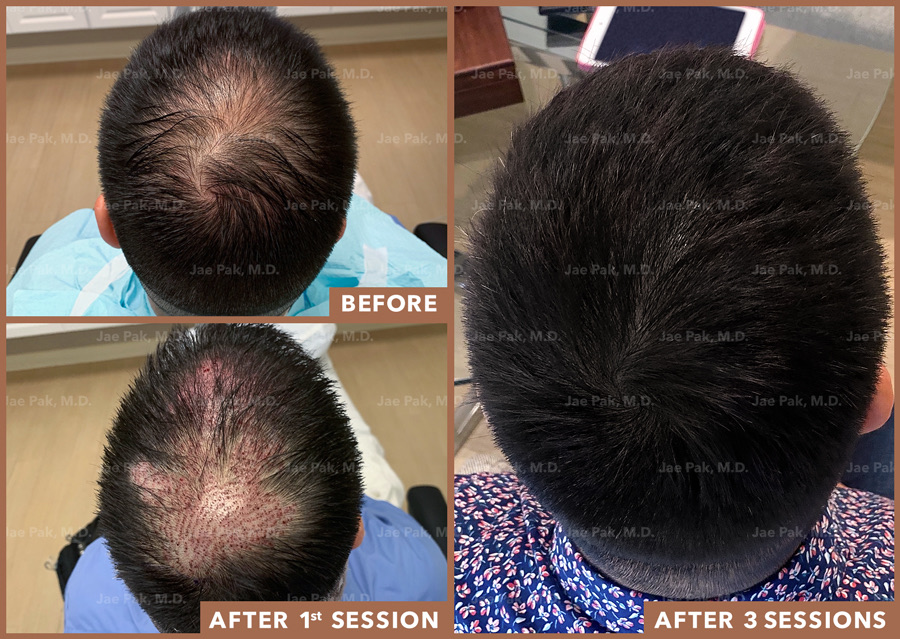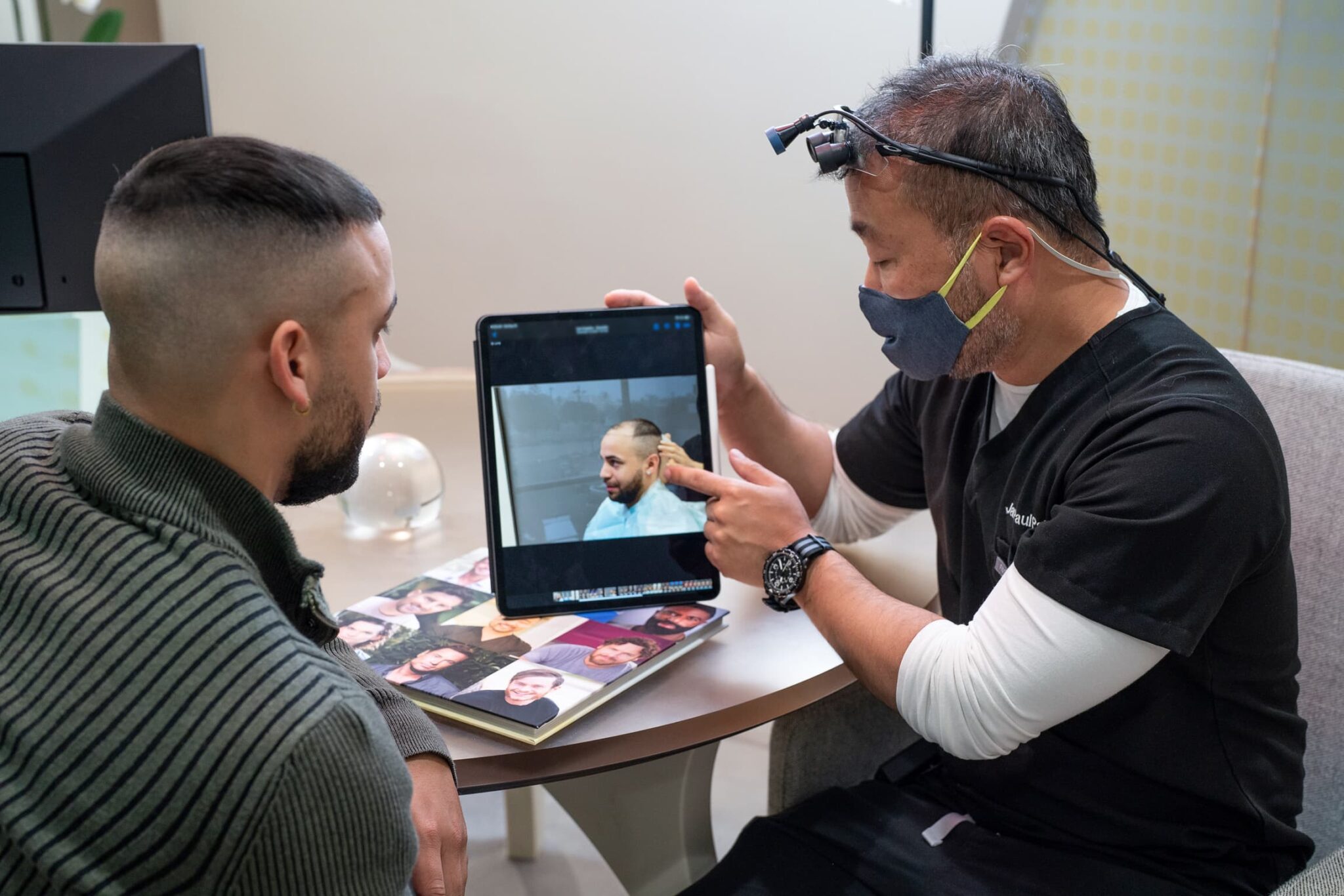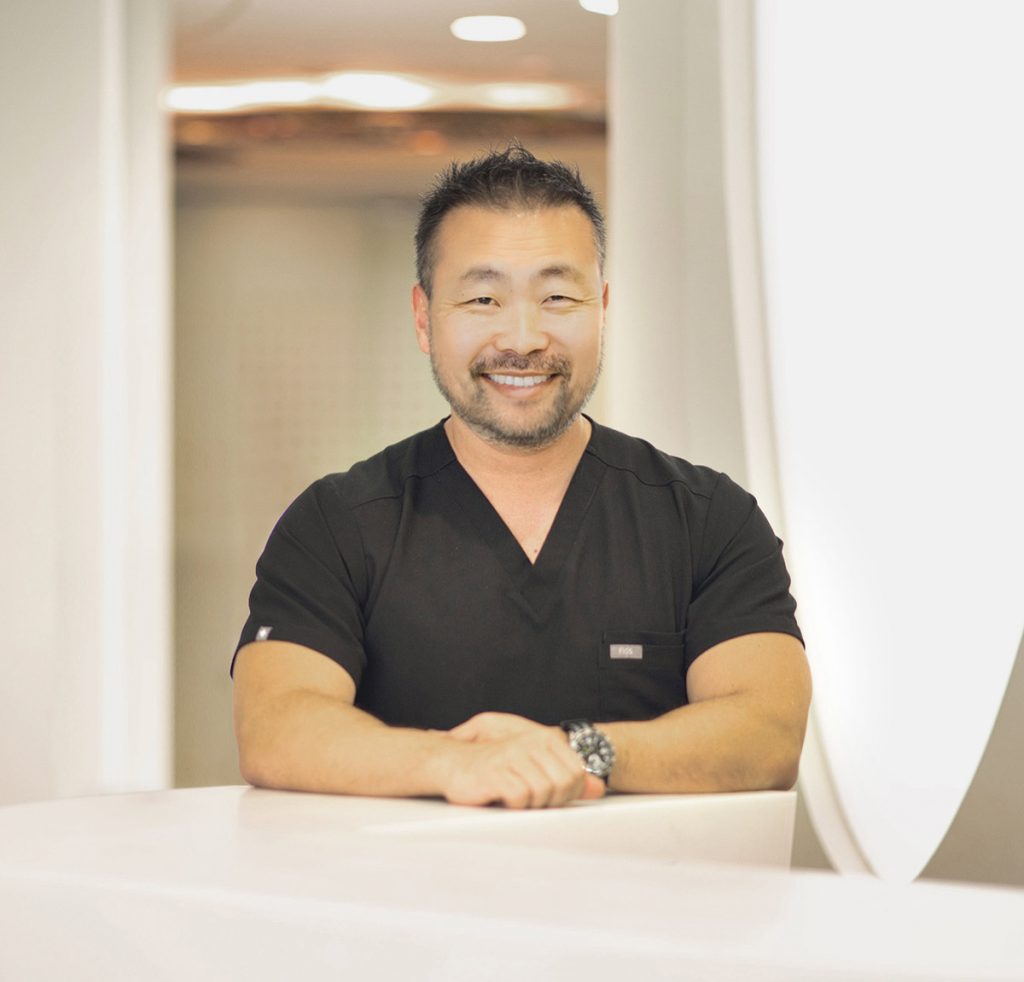
Stock Photo by Lesly JuarezLesly Juarez on Unsplash
A receding hairline is a cause for concern for any man. Considering that over two-thirds of men experience some degree of male pattern balding in their lifetimes, it’s even more important that you can quickly and clearly identify the signs of a receding hairline before the situation progresses out of control.
As any hair restoration expert will tell you, earlier is always better when it comes to reversing hair loss or minimizing the extent of the problem. Even if you have the slightest inclination to hair loss from hereditary factors, it’s best to understand the leading signs of a receding hairline before the issue ever occurs.
The best-case scenario is that you’ll never have to worry about a receding hairline throughout your entire life – but at least you’ll have the tools on hand to tackle the problem correctly and get ahead of the curve with treatments.
Without further delay, let’s list the top 10 signs of a receding hairline to look for, whether you’re in your early twenties or well into middle age.
Ask any guy about their experience with hair loss, and you’ll likely hear a similar story.
For most men, it all starts when they notice a change in the shape of their hairline. Even if they don’t acknowledge the change openly or share it with friends or partners, you can’t unsee it once it has been noticed.
At first, changes to the hairline are so subtle that they can be hard to detect, even for men who take pride in shaping and styling their hair. In fact, many hair restoration experts will say that by the time you’ve noticed the change, the process of balding has already been well underway for some time.
Set your worries aside, however, because there are still plenty of ways to address a receding hairline if you catch it early. For now, just keep a close eye on that hairline and be aware of even the slightest changes that may occur.

Flip through your phone or Facebook galleries to travel back in time and see how your hairline looked in the past. Since we live in the moment and forget the way things used to be, photos can offer revelations about your hairline and whether it’s moving in the wrong direction.
It’s not a fun experience to see your hairline morph over the years, but it’s part of the deal if you want to plan several steps ahead and stop balding in its tracks early on.
Keep in mind that nearly everyone loses their “youthful hairline” at some point in their late teenage years or early twenties, and that’s totally normal.
However, if you’re well into your twenties, thirties, and beyond, dramatic changes to your hairline should raise an alarm.
If you want to be extra vigilant about combatting hair loss right now, start taking two or three pics in the mirror (with a top-down view as well) and use them as a reference point in months and years to come.
The average person sheds between 50 and 100 hairs each day, and that’s a totally normal range no matter your age or environment.
A few hairs on the pillow or in the shower drain are to be expected in daily life, but if you start to see larger accumulations of hair in these situations, it might be a sign that a receding hairline is about to be revealed.
Normal shedding can be accelerated by stressful events or rapid changes to one’s diet or environment, but if none of these factors are at play and you notice more hair falling out than usual, androgenetic alopecia (the primary driver of pattern balding) is likely the culprit.
From now on, pay closer attention to your level of shedding and recognize changes in the volume of hair you leave behind during your grooming routines and in general.
A common first realization of hair loss happens for both men and women when their go-to hairstyles just don’t work like they once did.
This could mean that a bun or ponytail has lost some density or volume, or maybe there is a bigger gap in the central part of the hair that continues to widen by millimeters at a time.
It doesn’t help that many hairstyles pull on the frontal region of the scalp and cause tension alopecia, which can further accelerate a receding hairline.
It’s also worth mentioning the role of haircare products in this equation. Some products are harsh and damage hair over time, which is bad news for a receding hairline at any stage.
If you are relying heavily on products and high-heat implements like curlers and flatteners to style your hair, it may be wise to reduce the frequency of these treatments before you notice unwanted changes to your hair.
In our efforts to spot a receding hairline, we sometimes overlook some other early signs of balding that occur on other regions of the scalp. The temples and the crown (the top of the head towards the back) are two areas in need of closer inspection.
Zoom out, and you’ll see that hair on the temples actually play a key role in the formation of a healthy-looking head of hair. If you notice that hair starts to thin or recede from its original position, it’s a sign that hair loss in other areas may be next.

The behavior of hair on the crown is harder to track because we can’t see it directly in the mirror. Use photos in sufficient lighting and pay attention to wet hair in the shower to see if thinning is occurring on the crown.
Jae Pak MD Medical can help with a receding hairline. Schedule your consultation today!
Request a Consultation
For some hair loss patients, it’s the overall look and feel of their hair that starts to decline, rather than a receding hairline or a bald spot up top.
It is the natural cycle of follicles on the scalp to miniaturize slightly over time and lose their strength and volume, even among people who maintain a full head of hair into their elder years.
The tricky part is determining if that miniaturization will continue further or stop before hair loss progresses. It’s impossible to know precisely, which is why men and women should be conscious of their overall hair quality and health at every stage of life.
Since miniaturized follicles are more likely to fall out and not return, this is a signal that you should create a hair loss strategy and follow through.
A mature hairline for men is the norm after the process of puberty is complete. This marks the departure of the low, youthful hairline in exchange for high yet proportional hairline that exposes more of the forehead without looking receded or unaesthetic.
It’s exceedingly rare for men to maintain a youthful hairline into their thirties and beyond, and having a mature hairline can even look more distinguished and masculine.
However, the line between a mature hairline and a receding hairline is tenuous, and men need to watch their hairlines closely if they find themselves in this gray area.
In addition to the anecdotal evidence we gather through experience, hair loss research clearly shows that hair on the sides and the back of the head tend to stick around much longer than the hair on the crown and vertex – sometimes forever.
This phenomenon occurs in men of all backgrounds and hair qualities and can be used to your advantage when determining the status of your scalp hair at any stage.
Just do a once-over of your scalp hair and compare it to the “outer edge” hair to see if there’s a substantial difference in look, feel, volume, or coverage.
This edge hair could prove quite useful down the road if you seek out a hair transplant to rectify a receding hairline, so continue to treat it well!
Decades ago, leaders in the hair loss field created the Norwood scale to classify various stages of hair loss in a clear, illustrated manner that all can understand.
These simple charts offer a point of reference to help articulate your situation to a hair loss professional should you meet for a consultation.
The Norwood scale is useful in many ways, but remember that it’s not a crystal ball, and won’t tell you the future of your hairline. Use it as intended rather than viewing it as a hairline horoscope. Don’t forget: it’s how you respond to hair loss that matters most.

The items covered so far all relate to the early signs of hair loss, but sometimes you need a professional opinion to get the full story.
Even if you’ve noticed only a slight reduction in hair volume or a centimeter shift in your hairline, it’s worth teaming up with a hair restoration expert sooner rather than later.
With a hair loss pro in your corner, you don’t need to leave any questions unanswered or leave anything to chance. Having that extra peace of mind is worth the visit with an expert.
Is your receding hairline already on the move? You can start a preventive regimen right away or test out an array of non-invasive therapies to keep your hair looking great.
If the time comes to consider restorative surgery, you’ll be in good hands already rather than starting from square one.
A receding hairline is not a foregone conclusion for pattern baldness, but it is essential to catch the signs as early as possible.
Keep this list of tips in mind and reach out to Jae Pak, MD, to schedule a consultation with a trusted professional.
Sources:
Hair Loss or Hair Shedding? | AAD
Speak with Jae Pak, M.D. today!
Request a Consultation